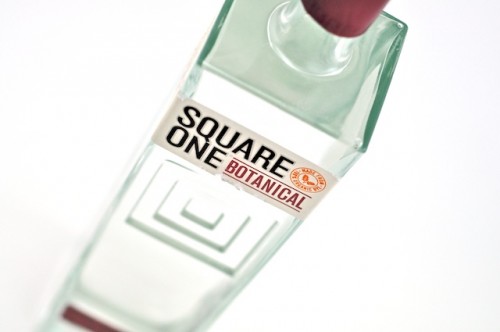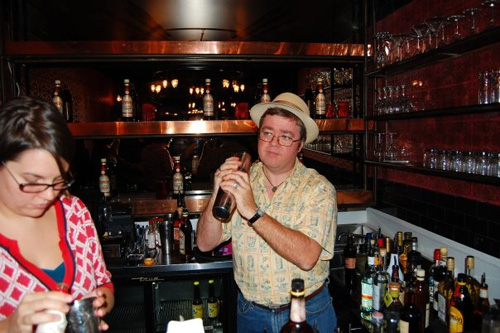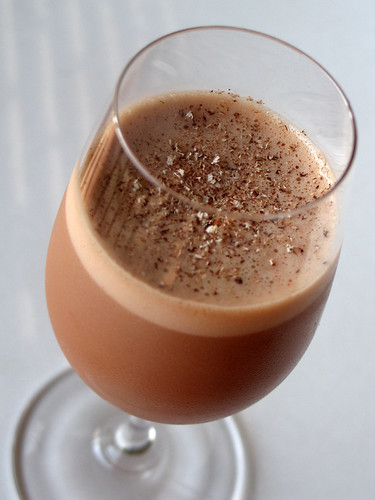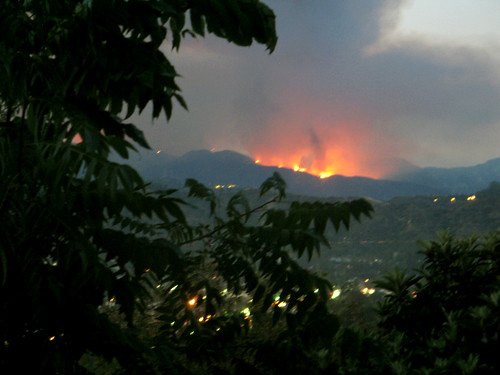Thursday Drink Night: Square One Botanical Spirit
[Well, I had hoped to hold off on posting until the blog redesign was done, but it’s been over two weeks since I posted, and I really ought to make sure you know I’m not dead, and that I’m still writing. We will, I hope, have a Grand Unveiling soon! Now, on to the matters at hand …]
Last Thursday night was another edition of Thursday Drink Night, taking place as usual in the Mixoloseum Chat Room. Bartenders, mixologists, cocktail writers, enthusiasts and more join into an affable rabble as we mix drinks and stay up too late. TDN always has a theme, and sometimes an official sponsor, and last night it was a new product called Square One Botanical Spirit. “Botanical Spirit”? What the hell’s that? Good question.

DRAMATIQUE™ bottle photo by CocktailNerd
Square One is most well known as a company that makes organic vodka. I understand it’s quite good as vodkas go, but as I’m not a vodka man I never paid it much attention. Then came their second release, a cucumber flavored vodka that I got to try at The Sporting Life, a monthly gathering of local L.A. bartenders and cocktail nerds, with drinks made with the product by H. Joseph Ehrmann of Elixir in San Francisco. H. made us some mighy fine drinks with it, and I found it to be quite a bit more interesting than most flavored vodkas I’d come across.
Recently Square One released Botanical, which is quite pointedly not labelled as a vodka. It’s far, far more than a flavored vodka, and almost resembles a gin in its botanical complexity. In fact, if it contained juniper (which it does not), it’d be a pretty tasty New Western-style gin. As it is, it’s a pretty tasty … um, something. We don’t exactly know what to call it. It’s not flavored vodka, but more. It’s not gin because there’s no juniper, not aquavit because there’s no caraway. So far, it’s pretty unique, and perhaps “specialty spirit” comes closest, clunky as that is.
Square One Botanical’s botanicals include pear (which is the most forward), lavender, rose, chamomile, lemon verbena (a flavor and aroma that I adore; I wash with lemon verbena-scented soap every day), rosemary, coriander and citrus peel, in a base of neutral rye grain spirit that’s given as clean a fermentation as possible, just one pass through the column still and one simple filtration. Another difference between this and a gin (besides the lack of juniper, of course) is that the botanicals go in afterward, and aren’t in the still during distillation.
The pear comes up in front, not like a pear-infused vodka (most of which I don’t really like) and not nearly as strong as a pear eau-de-vie, but still impossible to miss. The lavender and rose gently envelop it, and any other lavender element you’d care to add to a cocktail based on this spirit (syrup, tincture or bitters) would go quite nicely. The other spices are subtle, but provide a cushion upon which the flavor structure rests. I really have to hand it to Square One for thinking outside the box on this one. They wanted to produce something different, and they did — not only that, it’s good.
In coming up with an original cocktail for TDN my first thought was to treat it like a gin and make something Martini-like with it, just Square One Botanical with perhaps some Dolin Blanc sweet white vermouth to accent its fruity notes, but I decided to skip over that and head for something a bit more complex. (I still might try that, though.) I wanted some citrus to go along with that pear, some ginger too (I love that combination), and I wanted to boost the pear and lavender notes inherent in the spirit. Here’s what I came up with.
THE AQUARIA COCKTAIL
2 ounces Square One Botanical spirit
1/2 ounce Domaine de Canton ginger liqueur
1/4 ounce fresh lime juice
1/4 ounce fresh orange juice
2 barspoons pear eau-de-vie (I used Purkhart)
1 dash Fee’s Old Fashion Aromatic Bitters
1 dash Scrappy’s Lavender Bitters (or lavender tincture)Combine in a mixing glass, add ice, pop the shaker tin on and shake for a slow count to ten. Strain into a chilled cocktail glass, garnish with an orange peel.
The lavender bitters are optional, since they’re not easy to get. Scrappy’s Bitters are a small-batch bitters maker out of (I think) Seattle, and while their lavender bitters are pretty one-note (lavender, with a bitter base) it works beautifully with this drink. I think it’d work even better with Bobby Heugel’s house-made lavender-vanilla bitters from Anvil, but as I didn’t have any this did the trick. In fact, I’m considering adding some vanilla extract to Scrappy’s to see how that works.
See the Mixoloseum weblog for more original recipes using Square One Botanical that flew into the ether that night — there were some mighty fine ones.








